Syn.: Thermia rhombifolia (Nutt. ex Pursh) Nutt., Cytisus rhombifolius Nutt. ex Pursh, Thermopsis arenosa A. Nelson
Family: Fabaceae Lindl.

Distribution: Species from North America from British Columbia to Ontario, absent in easternmost part of Canada and from Dakotas south to New Mexico and Oklahoma, absent in western and eastern states of US.
Ecology: Prairie and dry grasslands and open forests. Elevations 600–2100 m. Early flowering, April to June.
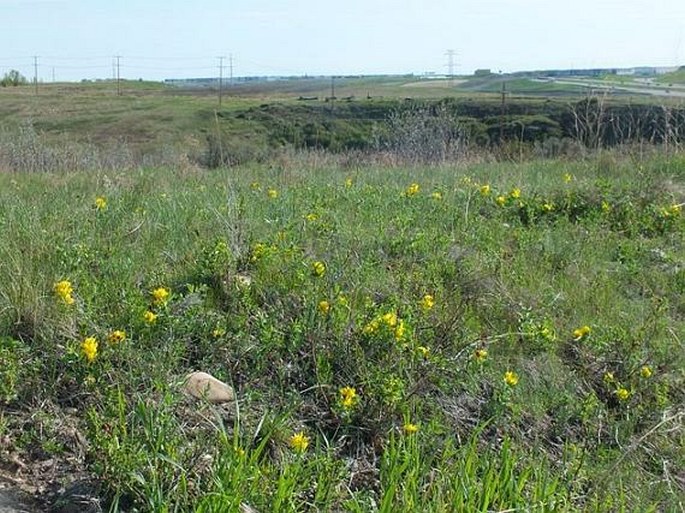
Description: Perennial herb with stems 10–40 cm tall, from creeping rhizome. Leaves alternate, digitately compound with 3 leaflets; stipules large; leaflets oval to rhombic with rounded sides, 2–4 cm long, margins smooth. Inflorescence a short raceme, 10–20-flowered. Flowers golden yellow, pentamerous, 15–20 mm long. Fruit is a legume, 3–7 cm long, curled into an almost circle, hairless, seeds 5–13.
Use: Natives used the plant as a source of yellow dye and preparation of tea to cure stomach ailments.
Note: The plant has toxic properties, causing vomiting, dizziness and abdominal pain. This species was discovered during John Franklin’s ill-fated First Arctic Expedition before year 1823.
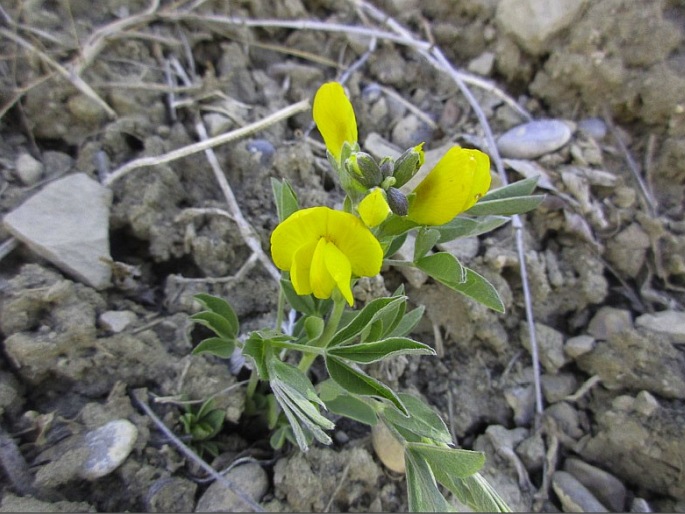
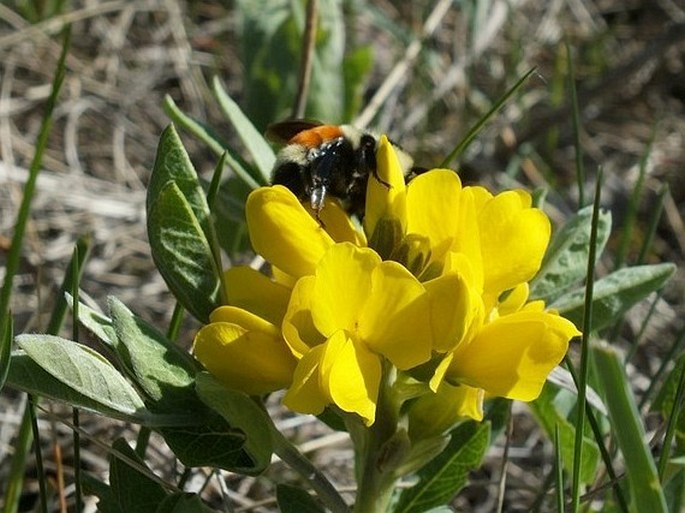
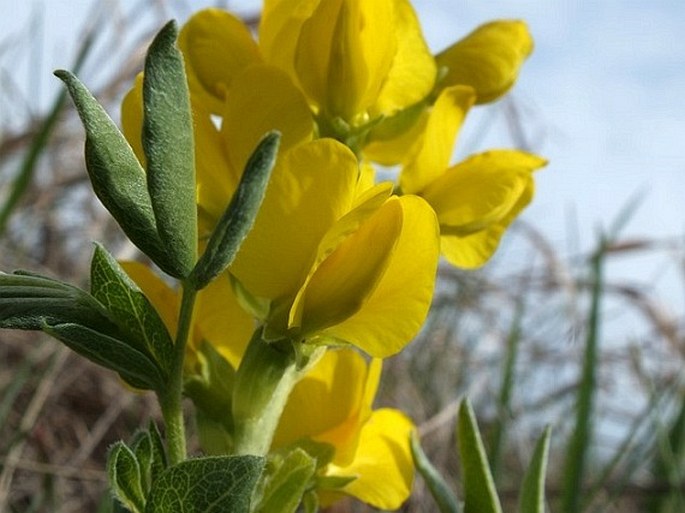
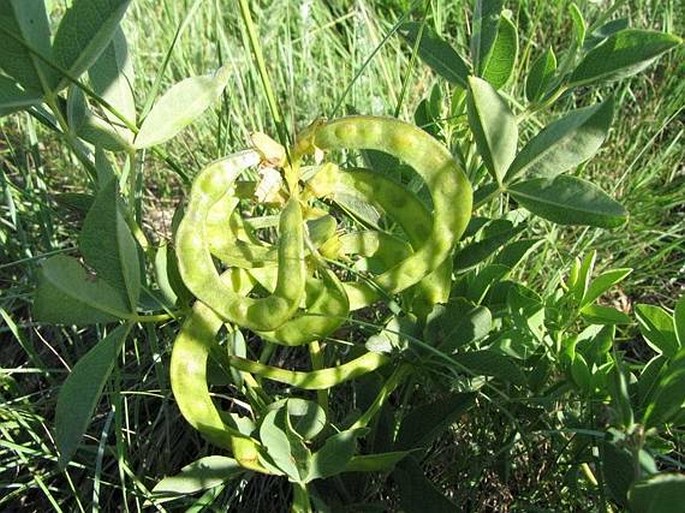
These images were taken in Canada, Alberta, Calgary, Confluence Park (2013 and May 2014).


